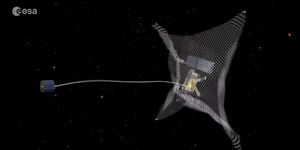Unlocking Deep Ocean Mysteries with eDNA
The ocean remains largely unexplored, and the ocean’s twilight zone is of key interest to researchers. Named for the lack of light, the twilight zone ranges from about 200 to 1,000 meters below the ocean’s surface. A team of scientists from Lehigh University and Woods Hole Oceanographic Institution (WHOI) have developed a novel technique to study this deep water ecosystem, notably eDNA.
The National Oceanic and Atmospheric Administration (NOAA) defines eDNA, environmental DNA, as “free-floating genetic material that organisms leave behind in the water column, an almost invisible sign of their presence.” Marine organisms can be identified by unseen signs of their existence, similar to human fingerprints left behind on surfaces or other forensic materials.
An article from WHOI regarding the research highlighted biologist Annette Govindarajan, who uses DNA barcodes to identify individual species. Similar to human forensic programs, the DNA barcodes of organisms are stored in a database, and Govindarajan uses the information to build a catalog of deep-sea species.
According to NOAA, the team’s mission occurred from September 23 to 27, 2019. They used the Manta research vessel and the autonomous underwater vehicle (AUV) Mesobot to collect eDNA near Flower Garden Banks National Marine Sanctuary in the Northwestern Gulf of Mexico. To obtain the samples, the researchers developed an innovative pumping and filtering system on the AUV to be able to collect eDNA from the seawater. This novel system pumped more than 700 liters of seawater per dive. NOAA reports that the team completed five dives for over 15 hours in the water, and collected 238 eDNA samples from depths down to 365 meters.
In addition to identifying deep water species such as corals, fishes, and invertebrates, scientists are also interested in how ocean conditions might impact the quality of eDNA. WHOI reports that additional collaborating scientists are studying how water temperature, oxygenation, and pH might affect the stability and persistence of eDNA in deepwater habitats.
The results of this expedition are essential to help researchers create a global framework for the use of eDNA for deepwater biodiversity research.
Sources: NOAA, WHOI, WHOI Oceanus










